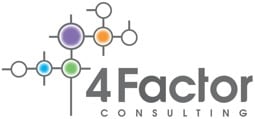Yes, this is another post related to things I learned at the ANS-UWC. I don’t usually dwell so long on one conference, but there was so much interesting information that I wanted to pass along.
Dr. Corradini and the ANS’ CNST
Dr. Michael Corradini, president of ANS spoke about a new project ANS has undertaken – The Center of Nuclear Science & Technology (CNST). The project was started about six months before the earthquake and tsunami in Japan, when Fukushima dominated the news waves. The CNST was put on hold for a period while the ANS concentrated on responding to those events.
A president’s committee within ANS that Dr. Corradini co-chaired was formed a month after the earthquake to assess various aspects of the events at Fukushima, including the level of public knowledge and understanding. One sub-committee was dedicated to assessing the communication effectiveness, trying to understand some of the crisis and risk communication in Japan. There was a clear lack of knowledge in the general public, both in Japan and in the U.S., regarding nuclear technology. No surprise to anyone, we haven’t been communicating enough, we need to do better.
So, Dr. Corradini announced the CNST at this conference. Its primary objectives are to provide education for K-12, teachers, the general public, and policy-makers on nuclear technology. The CNST will be providing fact-based worksheets and websites to help with education. In fact, this year, the CNST has run five sessions in Washington, DC for legislative aides, to help these folks understand a little more about the technology and how it works.
Mr. Freebairn, a Journalist’s View
After Dr. Corradini, Bill Freebairn of Platts talked about the views of nuclear from a journalist’s perspective. Mr. Freebairn is an excellent journalist at Platts, which is a news service for the energy business. His “beat” is primarily nuclear. He opened with a discussion of one of those age-old arguments – Does the media reflect or shape public opinion? His answer “a little of both” – For what it’s worth, I agree.
Mr. Freebairn talked about media coverage prior to Fukushima was mostly local, nationally there was limited interest. After Fukushima, there has been significantly more national press and media attention on nuclear. He acknowledged the limited knowledge of most journalists. Many went into journalism to avoid science and math, they are generalists. This is good and bad. Such journalists ask questions that the general population also does not understand, forcing us technical types to clarify concepts we don’t realize are not well understood. However, they don’t know whose facts are real, making them more vulnerable to wild claims.
Putting it Together
Dr. Corradini’s speech was particularly important to me as I’m involved in many of these issues with ANS. I served as a key spokesman for the ANS in the weeks following Fukushima and worked hard to explain the technology to journalists and talk show hosts all over the world. In addition, I served on the risk communication sub-committee and spent many hours researching risk understanding and communication for that group. Finally, I serve on the Public Information Committee within ANS, which has prime responsibility for the CNST. We are actively working on a grants program to encourage local sections and individuals to develop and use materials to educate the public and local governments about nuclear technology.
After Mr. Freebairn’s talk, I was struck by the two speeches put together. The CNST that Dr. Corradini mentioned and the training sessions we put together for federal legislative aides needs to be rolled out for journalists and local and state government folks. Webinars would allow diverse attendance and teachers to bring some sound science to people that are in positions to make decisions and/or influence public knowledge.
What are YOU doing to help educate the people in YOUR community?

I fully agree with view expressed. In the coutries like India we need to plan public awareness targeting the following categories of people
a)Government officials and politicians
b) Professional bodies, technologists and managers in Industries
c)Senior professors and research workers
c) Graduate college teachers and students
e) School students and teachers
d) NGOs and local elected bodies and general public and above all
e) media persons
Tailor-made programme should be for each category
Programs don’t necessarily need to by tailor-made. If you think in terms of knowledge level and work from that, you’ll find that much teaching will be similar, with only a few tweaks to make the subject matter specifically germane to the audience.
That’s why i realized that the material ANS used to help educate legislative aides would form a good starting point for a training session for journalists.
Margaret;
We just past our 30th anniversary of doing what ANS National is just forming. We run what we call the NEST Program. It is geared to teachers K-12and they recieve credit for being there, we also go into secondary and college classes with demoonstrations,experiments and lectures.By the way I was at the conference also.
Rich
Rich
Rich,
I’m glad you were at the conference. I’m also glad to hear you’ve been reaching out the K-12 teachers and students. Some local sections are far more active than others. And ANS has been providing support material for a long time, but it was getting dated and the society wanted to expand the reach a little further. I’m excited again about being a member and trying to find ways to make a difference out there!.
Margaret